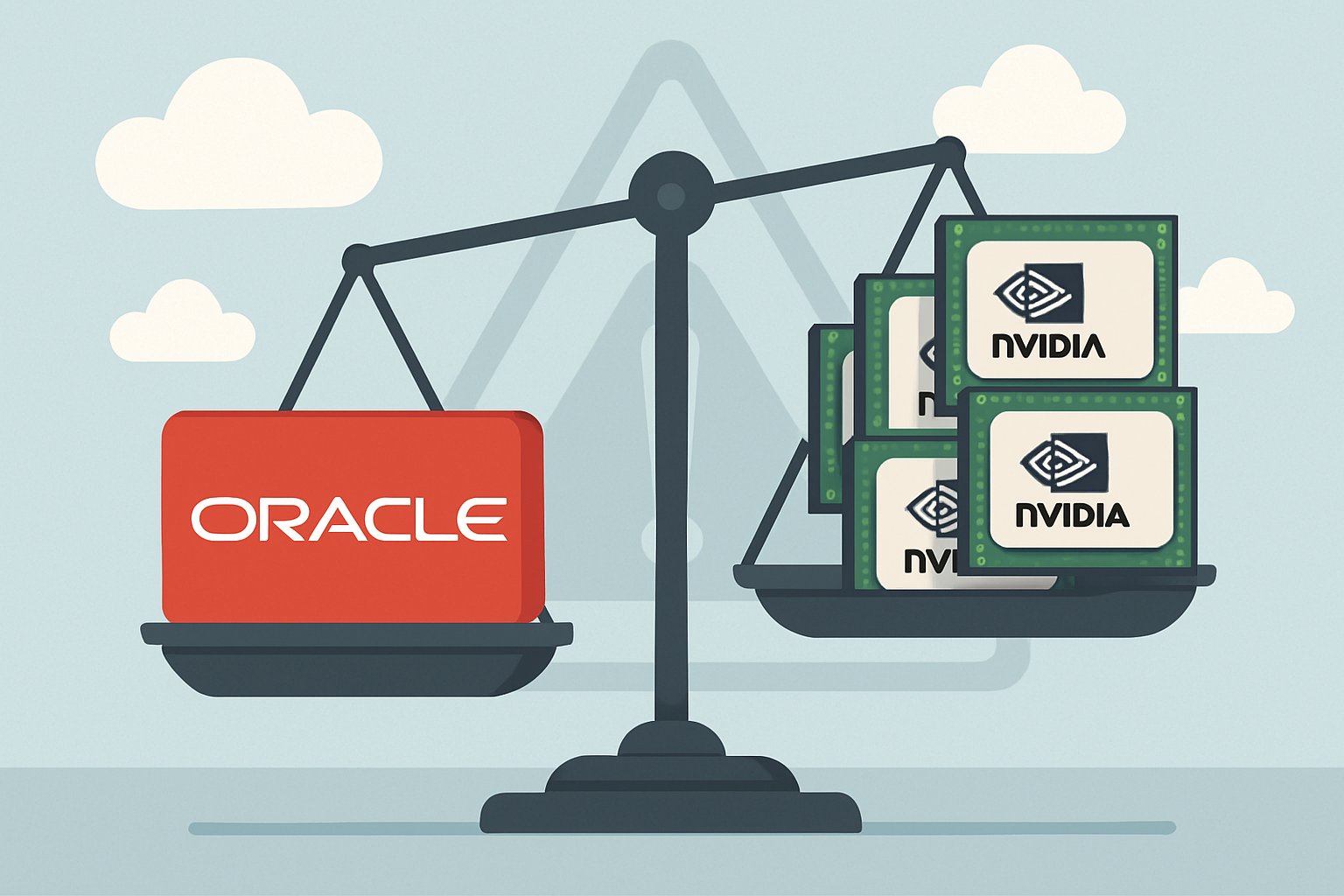
AI CERTS
1 day ago
Oracle Faces Customer Concentration Risk Amid Nvidia Dependence

While headlines exaggerated an 11% plunge, the sell-off still rattled long-term holders.
Moreover, analysts quickly linked the wobble to customer concentration risk around a few massive AI buyers.
OpenAI, Meta and other hyperscalers dominate Oracle’s $455 billion backlog, amplifying that exposure.
Meanwhile, Oracle’s heavy dependence on Nvidia H100 and upcoming Blackwell GPUs deepened investor unease.
Observers warned that such Blackwell reliance exposure could erode future margins if chip costs rise.
Thus, the episode reignited debate over whether the AI boom conceals an emerging AI bubble contagion.
This article unpacks the numbers, outlines database giant vulnerability factors, and examines mitigation strategies.
Industry leaders can then gauge real risks and act decisively.
Margin Leak Fallout
The leaked document disclosed $900 million revenue from Nvidia server rentals but only $125 million profit.
Consequently, gross margin sat near 14%, far below management’s long-term target of 30-40%.
Investors feared the thin spread signalled future cash flow strain.
Bloomberg reported the figures at market open, and selling pressure intensified immediately.
Nevertheless, bulls argued that early AI deployments always depress margins before utilization improves.
Oracle echoed that defence during its analyst day several weeks later.
Skeptics linked the low margin to heightened customer concentration risk because only a handful rent these clusters.
Additionally, Nvidia pricing power underscores Oracle’s supply chain exposure.
The margin leak exposed short-term fragility in Oracle’s AI economics.
However, backlog strength paints a different picture, explored next.
Revenue Backlog Paradox
Oracle boasts a staggering $455 billion in Remaining Performance Obligations, booked during Q1 2026.
Moreover, that backlog grew 359% year over year, dwarfing legacy database contracts.
Management claims the backlog converts at higher blended margins as deployment phases start.
Therefore, optimistic analysts label the backlog a cushion against near-term volatility.
In contrast, rating agencies warn that backlog bulk comes from a narrow client list.
This raises customer concentration risk if any flagship partner delays payments.
Key backlog facts include:
- RPO: $455 billion, 359% YoY
- Top three customers reportedly >60% of AI contracts
- Average contract length: 5-7 years
Critics call this dynamic a database giant vulnerability that seldom appears in headline metrics.
The numbers impress, yet dependency remains concentrated.
Consequently, we next examine supplier vulnerabilities.
Vendor Dependence Pressures Mount
Nvidia supplies most GPUs powering Oracle Cloud Infrastructure clusters.
Meanwhile, Blackwell chips will dominate the next capacity wave scheduled for 2026.
Such Blackwell reliance exposure magnifies pricing uncertainty because Nvidia still controls allocation.
Furthermore, U.S. export rules could suddenly tighten, throttling shipments to Oracle’s Asian facilities.
That scenario would amplify supply chain exposure and delay revenue recognition.
Management has reacted by signing a sizable AMD GPU agreement.
Nevertheless, AMD’s ramp pace remains untested at AI scale.
Vendor concentration presents another layer of customer concentration risk beyond the sales ledger.
Subsequently, capital demands become pivotal, discussed next.
Capital Intensity Concerns Grow
Oracle’s AI buildout requires billions in data center construction and GPU purchases.
Consequently, capex has outpaced operating cash flow for three consecutive quarters.
Debt issuance filled the gap, lifting net leverage toward Moody’s trigger levels.
Moody’s highlighted customer concentration risk when reaffirming Oracle’s Baa2 rating with a negative outlook.
In contrast, bullish brokers expect margin improvement to restore free cash flow during 2027.
They argue depreciation schedules will balance quickly once utilization rises.
Critics fear unchecked spending reflects an AI bubble contagion that could burst if demand cools.
Capital strain ties back to thin early margins and expensive silicon.
Therefore, diversification efforts demand closer inspection.
Diversification Efforts Emerging Slowly
Oracle announced plans to source tens of thousands of AMD MI300 accelerators next year.
Moreover, management touts ongoing work with Ampere and homegrown Arm servers for inference workloads.
These steps reduce Blackwell reliance exposure and broaden supplier negotiations.
The company also targets geographic diversity, building campuses in Europe, India, and Latin America.
Additionally, the firm courts mid-market AI startups to dilute customer concentration risk.
Professionals can deepen strategy skills through the AI Architect™ certification.
Supplier and customer breadth may lessen database giant vulnerability over time.
Next, we review market signals that will confirm success.
Key Market Outlook Indicators
Upcoming Q2 earnings will reveal whether gross margin climbed from 14% toward guidance.
Furthermore, analysts will scrutinize RPO conversion schedules and cash collection timing.
Any slippage could spark fresh fears of AI bubble contagion.
Watch also for confirmed AMD deliveries and expanded microchip partnerships.
Such milestones would ease supply chain exposure and support pricing power.
Meanwhile, rating agencies may revisit debt outlooks if free cash flow rebounds.
These indicators will shape sentiment around customer concentration risk during 2026.
Finally, stakeholders must weigh mitigation options now.
Mitigation Steps For Stakeholders
CFOs supplying AI workloads should bake contingency pricing into multiyear commitments.
In contrast, investors may demand clearer disclosure on contract counterparty mix.
Furthermore, boards ought to monitor capital spending versus realized returns each quarter.
Oracle can publish cohort level margin data to reassure markets.
Additionally, it should accelerate supplier diversification to minimize Blackwell reliance exposure.
Proactive moves would curb database giant vulnerability and dilute customer concentration risk.
Effective governance can prevent AI bubble contagion from infecting the broader tech sector.
Consequently, vigilant execution remains imperative.
Oracle’s AI ambitions remain massive, yet earnings clarity still matters.
Leaked margins, heavy capex, and Nvidia dependence exposed real operational fragilities.
Moreover, customer concentration risk persists until the backlog diversifies meaningfully.
Supplier shifts should relieve supply chain exposure, provided AMD scales production smoothly.
Consequently, investors must track backlog conversion, margin trends, and capital intensity each quarter.
Boards should request scenario analyses that quantify customer concentration risk under slower AI demand.
Nevertheless, proactive governance paired with skilled talent can mitigate uncertainties.
Professionals can cement those skills through the AI Architect™ certification.
Take decisive steps now and position your organization for resilient AI growth.



